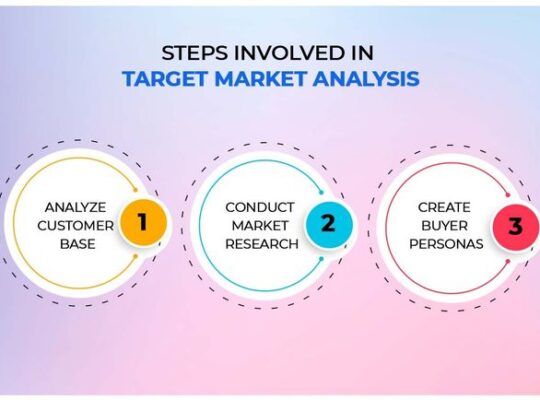The automotive industry is constantly evolving, as manufacturers and service providers continue to innovate and adapt to changing consumer demands, technological advancements, and shifting global trends. In this blog post, we’ll explore some of the most remarkable transformations taking place in the automotive world, and discuss how these developments are shaping the future of transportation.
The Rise of Electric and Autonomous Vehicles
One of the most significant changes in recent years has been the increased adoption of electric and autonomous vehicles. Driven by concerns about climate change, air pollution, and dwindling fossil fuel reserves, many governments and consumers are embracing electric cars as a more sustainable alternative to traditional gasoline-powered vehicles.
- Battery technology advancements have made electric vehicles (EVs) more affordable and practical for everyday use, with longer ranges and faster charging times.
- Car manufacturers, including Tesla, Nissan, and Chevrolet, have introduced a variety of EV models that cater to different segments of the market.
- Autonomous vehicle technology is also progressing rapidly, with companies like Waymo, Cruise, and Argo AI testing self-driving cars on public roads.
As more and more electric and autonomous vehicles hit the streets, we can expect to see a significant reduction in greenhouse gas emissions and increased safety for all road users.
Digitalization and Connected Cars
Another major trend in the automotive industry is the digitalization and interconnectivity of vehicles. Modern cars are equipped with a range of sensors, cameras, and onboard computers that enable them to communicate with each other and with traffic infrastructure.
- Vehicle-to-Everything (V2X) communication allows cars to share information about their position, speed, and other data, enabling them to avoid collisions, optimize traffic flow, and reduce fuel consumption.
- Over-the-air (OTA) software updates ensure that vehicles remain up-to-date with the latest features and security patches, without requiring a visit to the dealership.
- Smartphone integration and advanced infotainment systems have become standard features in most new cars, providing drivers with easy access to navigation, entertainment, and communication services.
These advancements are making driving a more convenient, enjoyable, and safe experience for motorists and passengers alike.
E-Commerce and Online Car Shopping
The rise of e-commerce has not only transformed the way we shop for everyday items, but has also had a significant impact on the automotive industry. Online car shopping has become increasingly popular, as customers can now browse a wide range of new and used vehicles from the comfort of their own homes.
- Virtual showrooms and augmented reality apps allow prospective buyers to explore different models, colors, and configurations before making a decision.
- Many dealerships now offer online financing and trade-in valuations, streamlining the car-buying process and reducing the need for lengthy negotiations.
- Online car marketplaces, such as Zemotor, have emerged as a convenient platform for purchasing used cars, offering a vast selection of vehicles at competitive prices.
By embracing digital channels and offering a seamless online shopping experience, automotive businesses can better serve the needs of today’s tech-savvy consumers.
Shared Mobility and Transportation-as-a-Service
The concept of car ownership is being challenged by the growing popularity of shared mobility services and the emergence of Transportation-as-a-Service (TaaS) platforms. These innovative solutions provide on-demand access to vehicles without the costs and responsibilities associated with ownership.
- Ride-hailing services like Uber and Lyft have revolutionized the taxi industry, offering a more convenient and cost-effective alternative to traditional cabs.
- Car-sharing platforms, such as Zipcar and Turo, allow users to rent vehicles for short periods, making it easy for city dwellers to access a car when they need one.
- Subscription-based services like Volvo’s Care by Volvo and Audi’s Audi Select offer customers the option to pay a monthly fee for access to a range of vehicles, including insurance and maintenance costs, without the long-term commitment of ownership.
As urbanization and environmental concerns continue to grow, shared mobility and TaaS solutions are expected to become even more popular, leading to a shift in the way we think about transportation and personal mobility.
The Role of Artificial Intelligence and Machine Learning
Artificial intelligence (AI) and machine learning (ML) technologies are playing an increasingly important role in the automotive industry, helping to improve everything from vehicle design and manufacturing to customer service and marketing.
- AI-powered design tools can optimize vehicle aerodynamics, weight distribution, and crashworthiness, resulting in more efficient and safer vehicles.
- Machine learning algorithms can predict equipment failures and maintenance needs, enabling proactive servicing and reducing downtime.
- AI-driven marketing and sales strategies can personalize the customer experience, tailoring offers and recommendations based on individual preferences and driving habits.
By harnessing the power of AI and ML, automotive businesses can enhance their products and services, and gain a competitive edge in the rapidly-evolving market.
Conclusion
The automotive industry is undergoing a period of profound change and innovation, driven by advancements in technology, shifting consumer preferences, and a growing focus on sustainability. From the rise of electric and autonomous vehicles to the proliferation of digitalization and e-commerce platforms like Zemotor, the future of the automotive industry promises to be more efficient, eco-friendly, and customer-centric than ever before.
As we continue to explore the innovative pathways in the automotive world, it’s essential for industry players to adapt and embrace these changes to remain competitive and drive success in this dynamic landscape. Stay tuned to our blog for the latest insights and updates on the automotive industry, and join us on this exciting journey towards a smarter, greener, and more connected future of transportation.






